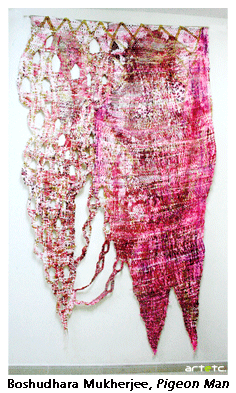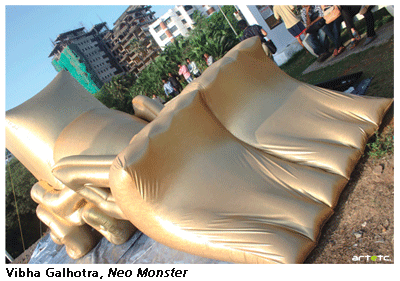- Publisher's Note
- Editorial
- Jogen Chowdhury: Maestro par Excellence
- Company School Paintings of Calcutta, Murshidabad, Patna (1750-1850): Doctoral Thesis of Late Dipak Bhattacharya (1960-2007)
- Kalighat Pat, a Protomodern Art Tradition?
- Academic Naturalism in Art of Bengal: The First Phase of Modernity
- Under the Banyan Tree - The Woodcut Prints of 19th Century Calcutta
- The Arabian Nights and the Web of Stories
- Gaganendranath Tagore's Satirical Drawings and Caricatures
- Gaganendranath's Moments with Cubism: Anxiety of Influence
- Abanindranath as Teacher: Many Moods, Some Recollections
- Atul Bose: A Short Evaluation
- J.P. Gangooly: Landscapes on Canvas
- Defined by Absence: Hemen Majumdar's Women
- Indra Dugar: A Profile of a Painter
- The Discreet Charm of Fluid Lines!
- Delightful Dots and Dazzling Environments: Kusama's Obsessive Neurosis
- Peaceful be Your Return O Lovely Bird, from Warm Lands Back to My Window
- Shunya: A Beginning from a Point of Neutrality
- The Tagore Phenomenon, Revisited
- The Bowl, Flat and Dynamic Architecture of the BMW Museum
- Baccarat Paperweights: Handmade to Perfection
- Byzantium and Islam: Age of Transition at the Metropolitan Museum of Art
- Outstanding Egyptian Art at the Metropolitan Museum of Art
- Retrospective of Wu Guanzhong at the Asia Society Museum
- Masterpieces from India's Late Mughal Period at the Asia Society Museum
- The Dhaka Art Summit: Emergence of Experimental Art Forms
- Many Moods of Eberhard Havekost
- Random Strokes
- Is it Putin or the Whole Russian State?
- The Onus Lies With Young India
- What Happened and What's Forthcoming
- Preview May, 2012 – June, 2012
- In the News, May 2012
- Art Events Kolkata, April – May 2012
- Mumbai Art Sighting
- Delhi Dias
- Art Bengaluru
- Musings from Chennai
- Cover
ART news & views
Mumbai Art Sighting
Issue No: 29 Month: 6 Year: 2012
by Jasmine Shah Varma
Woven tales
 If you were to see young artist Boshudhara Mukherjee's petite frame and then see her enormous canvas works you'd find it hard to think she's the one who created them. The Dangling Conversation, her second solo exhibition at Volte gallery was on view from April 26 to June 1. Painted canvas is cut into thinstrips and is then woven to make organically shaped work of art. They are displayed away from the wall affording two views of the physical work besides the shadows they cast on the walls. Along with canvas she occasionally weaves plastic, paper and even cloth. The imagery itself is complex made of colours, the vacant spaces and textures created by the weft and warp, the detailed forms rendered by dark panted lines and the overall indescribable and spontaneously created form of the whole work. Mukherjee's interests lie in spaces, memories and experiences of now and past that are woven together. One sees architectural motifs like spiral stairwells as well as what appears as splashes of colours that give a hint of her inspiration. She seems inclined to work with one dominant colour in every work that defines its mood; a bright lemon yellow or pink or darker shades like indigo blue. Faced with her work one is lost in its scale marvelling at the details as much as at the entire work. To say it in another way, its miniature style on a grand scale. Her spontaneous approach also means that if the painstakingly woven forms do not come together she undoes the pieces and restarts. It reminds me of Penelope, the character from Greek mythology, wife of Odysseus who is endlessly weaving a shroud, but secretly undoing it at night to keep impatient suitors away. She says that her art practice is much like life: one has to pick up the pieces, rebuild and move on but the scars remain.
If you were to see young artist Boshudhara Mukherjee's petite frame and then see her enormous canvas works you'd find it hard to think she's the one who created them. The Dangling Conversation, her second solo exhibition at Volte gallery was on view from April 26 to June 1. Painted canvas is cut into thinstrips and is then woven to make organically shaped work of art. They are displayed away from the wall affording two views of the physical work besides the shadows they cast on the walls. Along with canvas she occasionally weaves plastic, paper and even cloth. The imagery itself is complex made of colours, the vacant spaces and textures created by the weft and warp, the detailed forms rendered by dark panted lines and the overall indescribable and spontaneously created form of the whole work. Mukherjee's interests lie in spaces, memories and experiences of now and past that are woven together. One sees architectural motifs like spiral stairwells as well as what appears as splashes of colours that give a hint of her inspiration. She seems inclined to work with one dominant colour in every work that defines its mood; a bright lemon yellow or pink or darker shades like indigo blue. Faced with her work one is lost in its scale marvelling at the details as much as at the entire work. To say it in another way, its miniature style on a grand scale. Her spontaneous approach also means that if the painstakingly woven forms do not come together she undoes the pieces and restarts. It reminds me of Penelope, the character from Greek mythology, wife of Odysseus who is endlessly weaving a shroud, but secretly undoing it at night to keep impatient suitors away. She says that her art practice is much like life: one has to pick up the pieces, rebuild and move on but the scars remain.
Inflatable idea

Shoppers at central Mumbai's High Street Phoenix mall encountered a giant earthmover on April 27. Delhi-based artist Vibha Galhotra's installation Neo Monster is a travelling project commenting on urbanisation and lifestyles that reflect ways people spend their money. Galhotra revels in the irony that she chose to install her diatribe in a former mill land that has become a haven for consumers of expensive and specialised branded lifestyle. The shiny gold, life-size inflatable earth mover shaped object, pumped with air through a motor, attracted attention and became quite the photo-op. The question is did the message get across or was it consumed as a visual delight, a playful toy for the entertainment of visitors to the mall. Also it would be interesting to know, in the minds of the viewers, the difference between inflatable toys available at the world famous toy store chain Hamleys that incidentally is in the mall. The installation was then moved to suburban Bandra's Carter Road Promenade on April 29th. Making the installation accessible to people at large was an opportunity for Galhotra to see their reaction to the monstrous transformation of the ordinary object. The project is expected to travel to more sites in the country. The Mumbai event was supported by Art Oxygen. Prior to Mumbai Neo Monster has been exhibited in a village near North Delhi, at Select City Mall in Delhi, Hornbill Festival in Nagaland and Colombo Art Biennale, Sri Lanka.
Responding to a site
 Space is a major constraint in Mumbai and that reflects on the room an art gallery has in the city. But smart and ambitious gallerists do their best to overcome those drawbacks. Priyashri Art Gallery functions out of a posh residential high-rise in Worli. The fourth floor gallery is sea-facing and Priyashri Patodia, the director of the gallery, has renovated the flats to make room for art display. With her curatorial venture Inside-Out, she has taken the word site as her starting point to see how three artists respond to the gallery's location and surroundings. Manali Mehta, Sumedh Kumar and Neha Thakar are the three emerging artists she invited to participate. All three presented site specific installations in their response to what this gallery site meant to them. Thakar created an experience box in the space allotted to her where she tried to capture the sounds and memories of the place. Through an LCD projector a brief video of shadows and light expressed the idea of momentariness and transition while the constant recorded sound of waves gave aural experience to the viewer. The day-time view of the vast sea and the reflection of the waters inside the gallery space and the night time presence of sea felt only through the sounds of the waters rushing to the shore and away inspired her. Similarly Kumar and Mehta too found their own strategies to respond to what the gallery, its location and the surroundings meant to them. The exhibition concluded on May 21.
Space is a major constraint in Mumbai and that reflects on the room an art gallery has in the city. But smart and ambitious gallerists do their best to overcome those drawbacks. Priyashri Art Gallery functions out of a posh residential high-rise in Worli. The fourth floor gallery is sea-facing and Priyashri Patodia, the director of the gallery, has renovated the flats to make room for art display. With her curatorial venture Inside-Out, she has taken the word site as her starting point to see how three artists respond to the gallery's location and surroundings. Manali Mehta, Sumedh Kumar and Neha Thakar are the three emerging artists she invited to participate. All three presented site specific installations in their response to what this gallery site meant to them. Thakar created an experience box in the space allotted to her where she tried to capture the sounds and memories of the place. Through an LCD projector a brief video of shadows and light expressed the idea of momentariness and transition while the constant recorded sound of waves gave aural experience to the viewer. The day-time view of the vast sea and the reflection of the waters inside the gallery space and the night time presence of sea felt only through the sounds of the waters rushing to the shore and away inspired her. Similarly Kumar and Mehta too found their own strategies to respond to what the gallery, its location and the surroundings meant to them. The exhibition concluded on May 21.